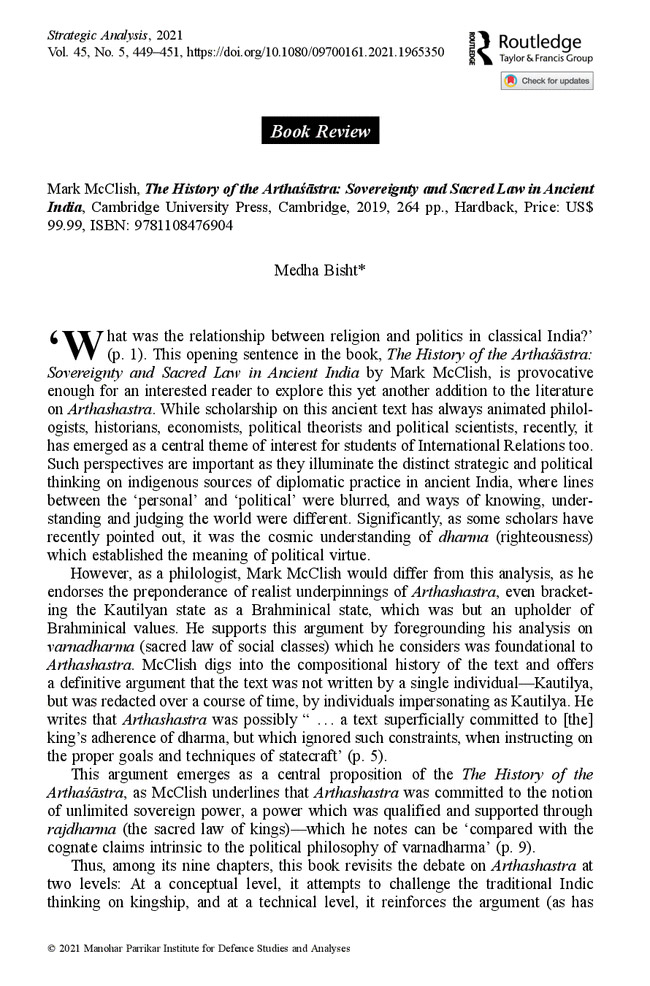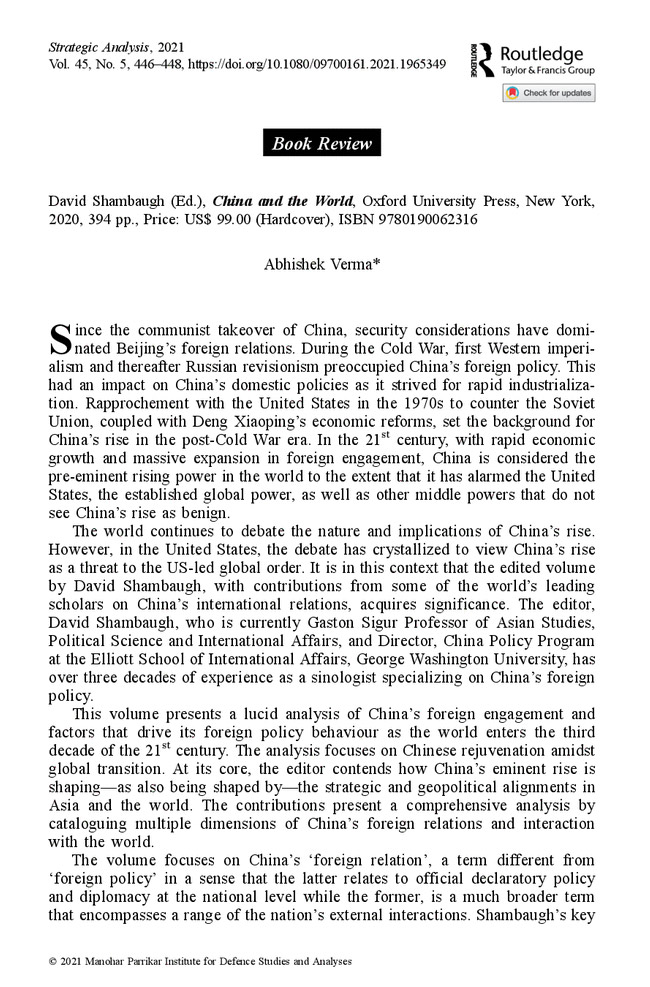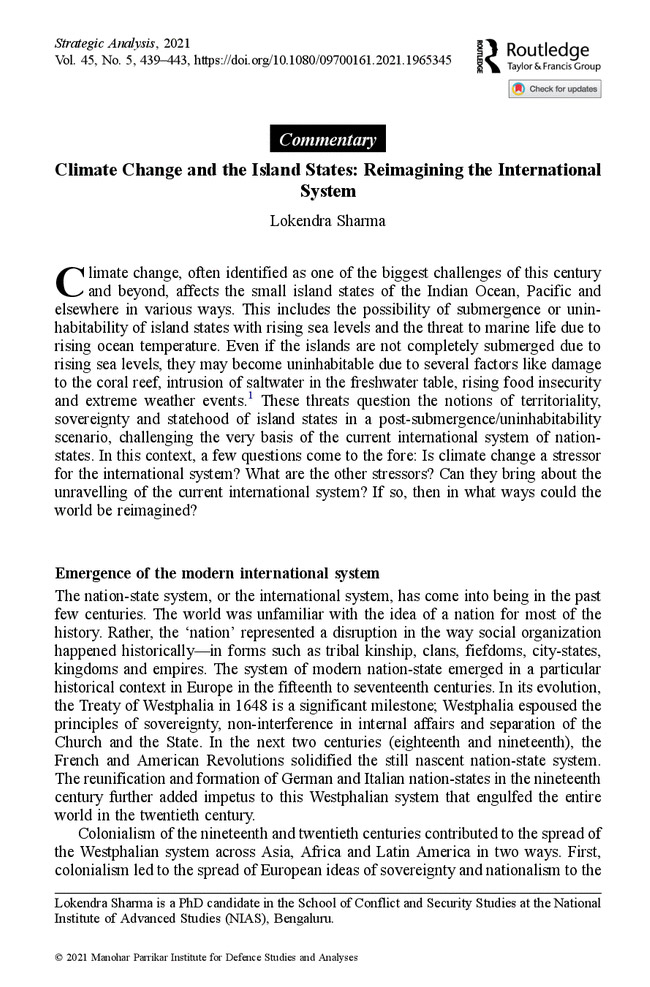Vajpayee: The Years that Changed India ShaktiSinha, Vajpayee: The Years that Changed India, Penguin/Vintage Books, New Delhi, 2020, 368 pp., Rs.599.00 (Hardback), ISBN: 9780670093441
Shakti Sinha, Vajpayee: The Years that Changed India, Penguin/Vintage Books, New Delhi, 2020, 368 pp., Rs.599.00 (Hardback), ISBN: 9780670093441
- Ahmed Raza |
- September 2021 |
- Strategic Analysis
India–Australia: Defining New Horizons of Engagement
The landmark virtual summit between Prime Ministers Narendra Modi and Scott Morrison in June 2020 led to ties being upgraded to a Comprehensive Strategic Partnership. Australia’s High Commissioner to India alluded to the four D’s—Democracy, Defence, Diaspora, Dosti (friendship), with increased focus on Defence. In the India–Australia partnership, the emphasis is on maritime security cooperation, Quad 2.0, the Malabar exercises as well as cyber security and intelligence cooperation.
- Pankaj K Jha , Shaun Star |
- September 2021 |
- Strategic Analysis
India’s Defence Expenditure: A Trend Analysis
This article examines India’s defence expenditure over the past ten years. In so doing, it provides a public finance perspective to explain the recurring resource crunch being faced by the Ministry of Defence (MoD). The article reasons that a substantial augmentation of resources for the MoD in the past has faced stiff barriers due to lack of tax buoyancy and also the political, economic and other exigencies that have led to greater public spending outside the traditional areas of expenses, including defence.
- Laxman Kumar Behera , Pabitra Mohan Nayak |
- September 2021 |
- Strategic Analysis
Partnering a Rival: The Sustenance of India’s Complex Interdependence with China, 2010-20
While a worrying disrepair in the political-military strand of the equation between New Delhi and Beijing prevailed through the 2010s, its economic component witnessed contrasting instances of convergence.
- Bipin K. Tiwary , Anubhav Roy |
- September 2021 |
- Strategic Analysis
Reducing Nuclear Dangers after the A.Q. Khanspiracy
This article defines Pakistan’s brazen retailing of sensitive nuclear technologies as Bomb Process Outsourcing (BPO) and places it in a larger perspective. It offers a short retrospective of the development and manufacture of nuclear weapons by the P-5 in which significant manpower and materials were ‘foreign’. This is true of the programmes of Israel, Iraq, South Africa, Argentina and Brazil as well. Pakistan, has now, contributed to North Korea, Libya and Iran.
- K. Santhanam |
- September 2021 |
- Strategic Analysis









